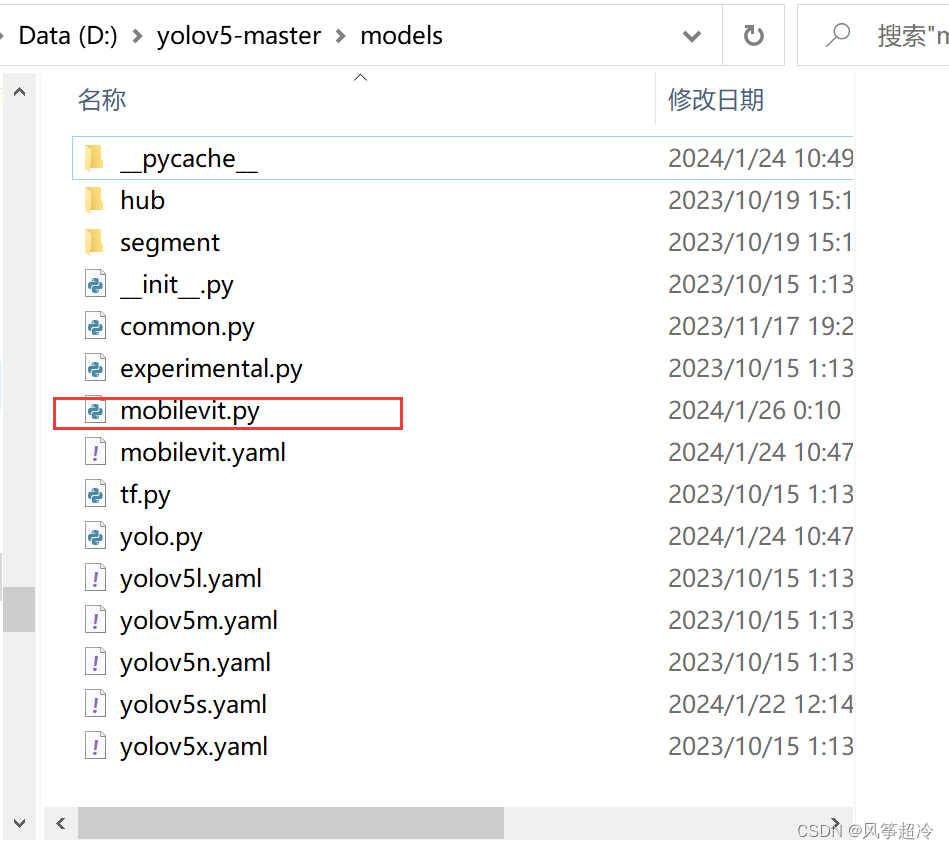【DeepLearning-8】MobileViT模块配置
完整代码:
import torch
import torch.nn as nn
from einops import rearrange
def conv_1x1_bn(inp, oup):
return nn.Sequential(
nn.Conv2d(inp, oup, 1, 1, 0, bias=False),
nn.BatchNorm2d(oup),
nn.SiLU()
)
def conv_nxn_bn(inp, oup, kernal_size=3, stride=1):
return nn.Sequential(
nn.Conv2d(inp, oup, kernal_size, stride, 1, bias=False),
nn.BatchNorm2d(oup),
nn.SiLU()
)
class PreNorm(nn.Module):
def __init__(self, dim, fn):
super().__init__()
self.norm = nn.LayerNorm(dim)
self.fn = fn # mg
def forward(self, x, **kwargs):
return self.fn(self.norm(x), **kwargs)
class Attention(nn.Module):
def __init__(self, dim, heads=8, dim_head=64, dropout=0.):
super().__init__()
inner_dim = dim_head * heads
project_out = not (heads == 1 and dim_head == dim)
self.heads = heads
self.scale = dim_head ** -0.5
self.attend = nn.Softmax(dim = -1)
self.to_qkv = nn.Linear(dim, inner_dim * 3, bias = False)
self.to_out = nn.Sequential(
nn.Linear(inner_dim, dim),
nn.Dropout(dropout)# mg
) if project_out else nn.Identity()
def forward(self, x):
qkv = self.to_qkv(x).chunk(3, dim=-1)
q, k, v = map(lambda t: rearrange(t, 'b p n (h d) -> b p h n d', h = self.heads), qkv)
dots = torch.matmul(q, k.transpose(-1, -2)) * self.scale
attn = self.attend(dots)
out = torch.matmul(attn, v)
out = rearrange(out, 'b p h n d -> b p n (h d)')
return self.to_out(out)
class FeedForward(nn.Module):
def __init__(self, dim, hidden_dim, dropout=0.):
super().__init__()
self.net = nn.Sequential(
nn.Linear(dim, hidden_dim),
nn.SiLU(),
nn.Dropout(dropout),
nn.Linear(hidden_dim, dim),
nn.Dropout(dropout)
)
def forward(self, x):
return self.net(x)
class UserDefined(nn.Module):
def __init__(self, dim, depth, heads, dim_head, mlp_dim, dropout=0.):
super().__init__()
self.layers = nn.ModuleList([])
for _ in range(depth):
self.layers.append(nn.ModuleList([
PreNorm(dim, Attention(dim, heads, dim_head, dropout)),
PreNorm(dim, FeedForward(dim, mlp_dim, dropout))
]))
def forward(self, x):
for attn, ff in self.layers:
x = attn(x) + x
x = ff(x) + x
return x
class IRBlock(nn.Module):
def __init__(self, inp, oup, stride=1, expansion=4):
super().__init__()
self.stride = stride
assert stride in [1, 2]
hidden_dim = int(inp * expansion)
self.use_res_connect = self.stride == 1 and inp == oup
if expansion == 1: # 构建没有扩展层的卷积块
self.conv = nn.Sequential(
# 深度可分离卷积(Depthwise Convolution)
nn.Conv2d(hidden_dim, hidden_dim, 3, stride, 1, groups=hidden_dim, bias=False),
nn.BatchNorm2d(hidden_dim),
nn.SiLU(),
# “线性”逐点卷积 (Pointwise-Linear Convolution)
nn.Conv2d(hidden_dim, oup, 1, 1, 0, bias=False),
nn.BatchNorm2d(oup),
)
else: # 构建包含扩展层的卷积块
self.conv = nn.Sequential(
# 逐点卷积 (Pointwise Convolution)
nn.Conv2d(inp, hidden_dim, 1, 1, 0, bias=False),
nn.BatchNorm2d(hidden_dim),
nn.SiLU(),
# 深度可分离卷积 (Depthwise Convolution)
nn.Conv2d(hidden_dim, hidden_dim, 3, stride, 1, groups=hidden_dim, bias=False),
nn.BatchNorm2d(hidden_dim),
nn.SiLU(),
# “线性”逐点卷积 (Pointwise-Linear Convolution)
nn.Conv2d(hidden_dim, oup, 1, 1, 0, bias=False),
nn.BatchNorm2d(oup),
)
def forward(self, x):
if self.use_res_connect:
return x + self.conv(x)
else:
return self.conv(x)
class MobileViTBv3(nn.Module):
def __init__(self, channel, dim, depth=2, kernel_size=3, patch_size=(2, 2), mlp_dim=int(64*2), dropout=0.):
super().__init__()
self.ph, self.pw = patch_size
self.mv01 = IRBlock(channel, channel)
self.conv1 = conv_nxn_bn(channel, channel, kernel_size)
self.conv3 = conv_1x1_bn(dim, channel)
self.conv2 = conv_1x1_bn(channel, dim)
self.transformer = UserDefined(dim, depth, 4, 8, mlp_dim, dropout)
self.conv4 = conv_nxn_bn(2 * channel, channel, kernel_size)
def forward(self, x):
y = x.clone()
x = self.conv1(x)
x = self.conv2(x)
z = x.clone()
_, _, h, w = x.shape
x = rearrange(x, 'b d (h ph) (w pw) -> b (ph pw) (h w) d', ph=self.ph, pw=self.pw)
x = self.transformer(x)
x = rearrange(x, 'b (ph pw) (h w) d -> b d (h ph) (w pw)', h=h//self.ph, w=w//self.pw, ph=self.ph, pw=self.pw)
x = self.conv3(x)
x = torch.cat((x, z), 1)
x = self.conv4(x)
x = x + y
x = self.mv01(x)
return x文件配置在D:\yolov5-master\models路径下
